Opposition to the Police
Given what has been said above, can you think of any reasons why there might have been opposition to the new Metropolitan Police?
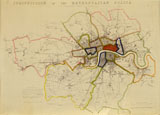
Area of Metropolitan Police
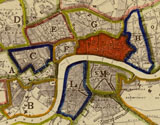
Central area
- Some parishes objected to the loss of control over the way in which they were policed.
- This was especially the case with the wealthier parishes that had pride in their local institutions, rather like (though of course to a much smaller degree than) the City of London. In 1843, moreover, the Vestry of Marylebone invited the local MP, Sir Henry Tufnell, to chair a committee to compare the new police with former forms of regulation. The committee’s findings remarked that between 1818 and 1828 the watch cost on average £9,566 per annum. 256 men policed the parish of Marylebone. Yet under the new police the Vestry contributed around £20,000 a year, which provided 211 men. While the new police meant a rise in the number of patrols by day, it also meant a cut in the number of night patrols. The map of the police divisional boundaries shows how the old units of local government were deliberately avoided. Comparison of the enlarged central area with the City of Westminster map demonstrates that the divisional boundaries within the Metropolitan Police area did not follow political boundaries.
- There was concern in some quarters that the new police would be another branch of the military designed to control the population.
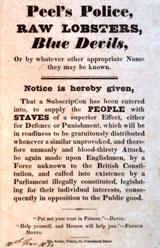
- Elements of the increasingly organized working-class viewed officers as agents of political repression, while some liberal Whigs and radicals feared an assault on constitutional rights and civil liberties. This handbill from 1830 is an example as to why the police were disliked by many.
- It is interesting that the idea of a centralized police was seen as despotic and continental, in other words un-English. Suspicion was that Lieutenant-Colonel Rowan, a veteran of Wellington's army, was seeking to establish a military force. But on Peel and the Commissioners' side there were deliberate attempts to ensure that the police did not appear military. Blue was chosen for the police uniform, as it differentiated the police from the scarlet worn by the army.
- Until 1864 officers also wore top hats to lend them a more civilian appearance. At the same time, while cutlasses might be issued when dealing with a riot and inspectors were allowed to carry pocket pistols, the only weaponry allowed the police officer on his beat was his truncheon. See for example the picture of Sydenham Police c.1860.
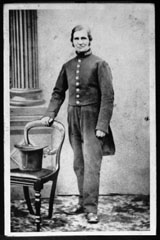
The focus on preventive policing meant that following the abolition of the police offices in 1839, detective policing was largely ignored. Occasionally men were ordered to wear civilian clothes to carry out surveillance, but it was not until 1842 that the Metropolitan Police got its first detectives. The use of detectives was viewed with distrust as it raised ethical questions about wearing civilian clothes, the use of informants, lies and deception not necessarily in the fight against crime, but particularly with reference to the policing of political radicals.
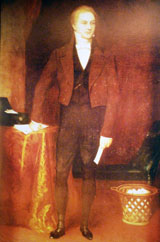 Sir Robert Peel
Sir Robert Peel